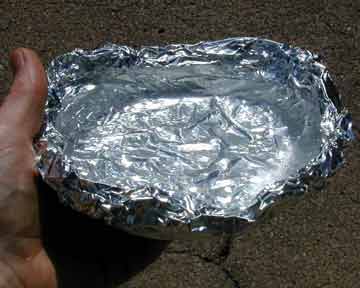

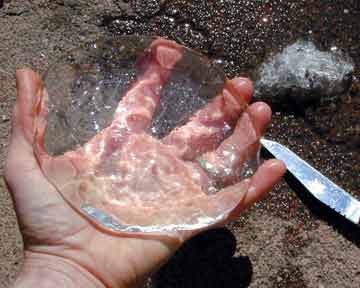
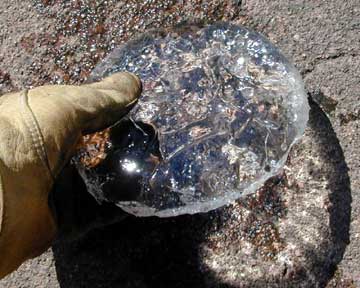
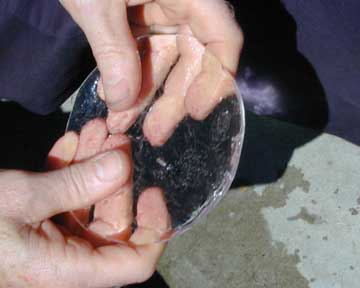
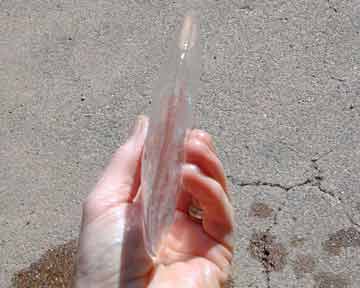
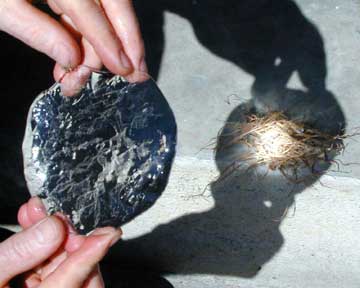
Locate tinder that is completely dry and finely divided. With the sun at its highest in the sky hold your lens perpendicular to the sun and move it up and down to focus the brightest spot of light onto your tinder. Be careful to avoid dripping water onto your tinder. The tinder will first smoke and then ignite. Carefully add more tinder and very small sticks until a good fire is established.
E-mail from Elijah Cobb:
Hi Bob;
I would be happy for you to use the images that Linda Raynolds took of my fire with ice making. Enclose are some others. These are taken by other folks. A local paper ran a story that was not very informative. The other local paper may do a story also - perhaps it will be worth sending to you.
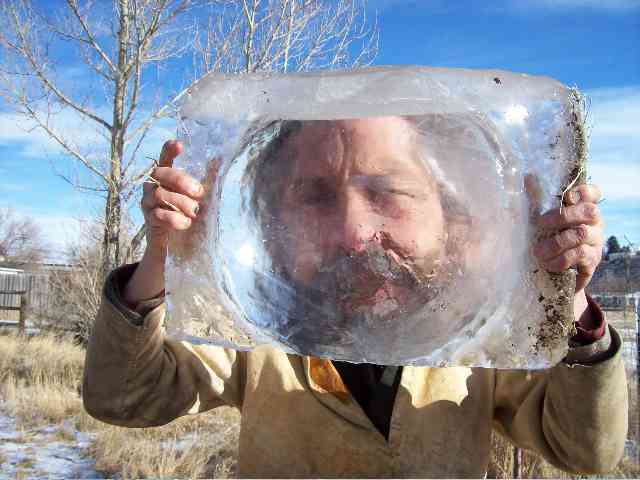
I used professionally made ice that was very clear. I have not been able to freeze a good size piece of clear ice outdoors. I don't live near a lake so I really have no idea how often you would be able to find a nice clear piece of ice. Because I had a large piece I went for size - maximum light gathering / concentrating. My focal the focal length of the lens was about 10 inches and the diameter of the focal area was about 50cent size. The focal area was not very coherent but seemed to have quite a bit of depth. It would produce smoke on dark paper in less than thirty seconds, and you could not hold your hand in the focal area for more that twenty plus seconds.
I carved the lens with a 2" chisel and smoothed by hand with a flexible sheet abrasive for tile work. I was amazed that it worked on my first real try. I thought it would need to be much more accurately focused.
I assume a much smaller lens could be made to work. I tried to make a smaller lens with a flat side and deeply curved surfaces - almost a sphere. I have not gotten it to work yet but I think this is the way to go - no double convex surfaces to line up with each other. I accidently destroyed it by exposing it to too much sun light which fogs, crazes and makes bubbles in the lens so that all the light scatters instead of focusing.
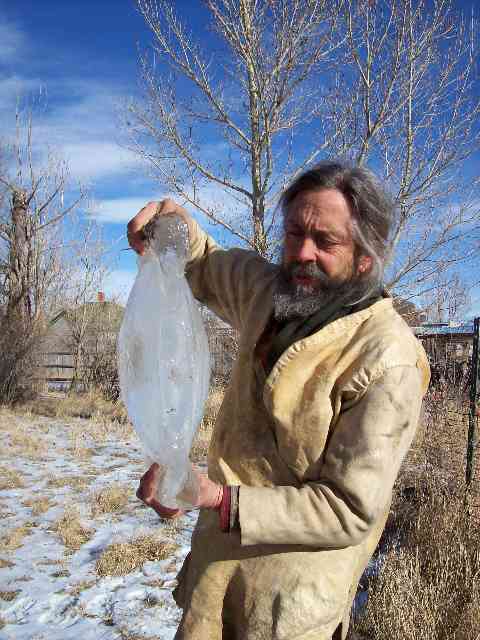
After using my two big lens for about four hours each they were both useless. The shape was fine but the ice was to bubbly and crazed.
Just before trying to make a fire I usually ran a bit of cool water over the surface of the lens to clarify it. (water too cold if freezes in rivulets - too warm it will make thermal stress crack through the whole lens/ block of ice)
Many folks assumed that I had made a mold and frozen water in it. My experience with making ice for fun sculptures is that I could not get ice that was any where near clear enough. Perhaps it would work in a freezer with distilled and boiled (deoxygenated) water with an insulator on the side away from the cooling coils.
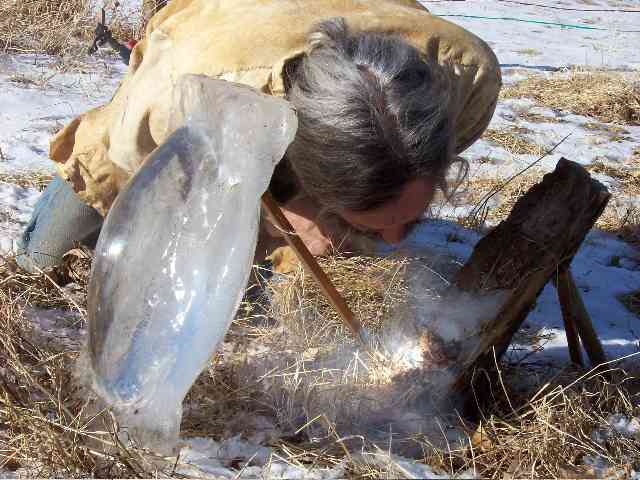
Elijah Cobb: ecobb@tritel.net
Cody, Wyoming
Watch a short video of Elijah Cobb making fire from his ice lens.
Other fire from ice articles: http://wildwoodsurvival.com/survival/fire/ice/index.html
E-mail your comments to "Bob Gillis" at bob@shelter-systems.com
We hope the information on the PrimitiveWays website is both instructional and enjoyable. Understand that no warranty or guarantee is included. We expect adults to act responsibly and children to be supervised by a responsible adult. If you use the information on this site to create your own projects or if you try techniques described on PrimitiveWays, behave in accordance with applicable laws, and think about the sustainability of natural resources. Using tools or techniques described on PrimitiveWays can be dangerous with exposure to heavy, sharp or pointed objects, fire, stone tools and hazards present in outdoor settings. Without proper care and caution, or if done incorrectly, there is a risk of property damage, personal injury or even death. So, be advised: Anyone using any information provided on the PrimitiveWays website assumes responsibility for using proper care and caution to protect property, the life, health and safety of himself or herself and all others. He or she expressly assumes all risk of harm or damage to all persons or property proximately caused by the use of this information.
© PrimitiveWays 2013